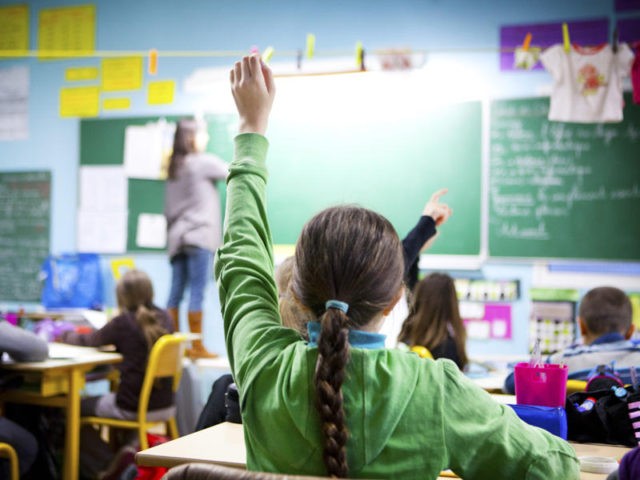The Texas Education Agency (TEA) released its annual Public Education Grant (PEG) List that identifies failing schools across the state. The new list reflected almost a 10 percent decrease from last year’s dismal findings but remains noticeably higher than two years ago.
The 2017-18 PEG List designated 1,379 of Texas public schools as struggling, slightly inching down from its 2016-17 PEG program results of 1,532. However, only 1,199 campuses landed on failing school list in 2015-16 list. According to the TEA, around 5.3 million students attend pre-k through grade 12 one of the state’s 8,000-plus public schools.
In 1995, the Texas Legislature created the PEG program. It allows parents whose children attend failing schools the opportunity to apply for an intra- or inter- district transfer, meaning they can request admission into a passing school within their home district or in another school district, Breitbart Texas reported.
Even though a school cannot reject a transfer application based on a student’s race, ethnicity, academic achievement, athletic abilities, language proficiency, sex, or socioeconomic status, districts can refuse these requests. The state provides an additional 10 percent per pupil funding to those districts that take PEG program students. Still, only a small number of eligible students transfer out of failing schools because the state does not provide funding for transportation, often proving a challenge for working parents.
The PEG List labels a school as low-performing when 50 percent or more of students fail the annual standardized State of Texas Assessments of Academic Readiness (STAAR) test in any two of the past three years, or when a campus is rated “Improvement Required” in the state’s accountability ratings over the same three year time period. The 2017-18 PEG list was calculated from 2014, 2015, and 2016 academic years.
The overall goals of the state’s public school accountability system are to prepare students for life after high school, and reduce achievement gaps among students from different racial and ethnic groups and socioeconomic backgrounds. Accountability is based on four indicators: student academic achievement and progress, reducing achievement, closing performance gaps, and postsecondary readiness.
However, this will change next year when the state institutes an A-F rating system passed by the Texas Legislature in 2015. This new system will include five “domains” or categories and factor in such metrics as the STAAR, graduation and dropout rates, enrollment in AP/IB courses, high school, college/career prep courses, and college readiness testing (i.e., Texas Success Initiative Assessment (TSIA), ACT, or SAT). The A-F ratings scale also includes “chosen, locally determined” community and student engagement, according to the TEA.
While the objective of A-F school ratings is to reduce the influence the state’s standardized testing play in evaluating schools, this method still bases roughly 55 percent of accountability on STAAR testing. Forty-five percent of the rating will be determined by the other factors. The Texas American Federation of Teachers (AFT) union opposed the A-F ratings. So did the Association of Texas Professional Educators (ATPE) and Raise Your Hand Texas, a group dubbed a “seasoned lobbying force on education issues at the Capitol” by the Texas Tribune.
Schools will get a preview of the A-F grading scale when the TEA releases initial grades on January 1. These statistics will give parents, education professionals, and lawmakers a peek into how schools stack up. On Friday, Texas Education Commissioner Mike Morath told reporters this sneak peek will not provide a complete picture into how schools and districts rate. They will only get graded in student achievement, student progress, closing performance gaps, and college or career readiness. Overall A-F grading will be released in August 2018.
The 2017-18 PEG List’s marginal improvement comes at a pivotal time. School choice remains a high priority for top Texas lawmakers in the upcoming legislative session starting in January. In 2015, the Texas senate tried to pass an education tax credit scholarship modeled after a 2010 Florida program and designed to allow low income and special needs families in failing public schools the assistance to pay for private tuition. Breitbart Texas reported it was halted by the Texas House.
Lt. Governor Dan Patrick, a strong proponent of school choice, remains steadfast in passing pro-school choice legislation. He charged the Texas Senate Education Committee with the interim legislative session task of studying school choice programs enacted in other states “examining education savings account and tax credit scholarship programs in particular.”
This year, Patrick, along with other pro-school choice lawmakers and advocates, crisscrossed the state holding forums that largely focused on Education Savings Accounts (ESA), a bill for which is expected to be filed in the 85th Legislature. Supporters welcome legislation they feel will allow their children to escape from failing schools while critics believe tax credit programs drain taxpayer resources from public schools, or will bring state and federal governments into private sector education.
Follow Merrill Hope, a member of the original Breitbart Texas team, on Twitter.

COMMENTS
Please let us know if you're having issues with commenting.